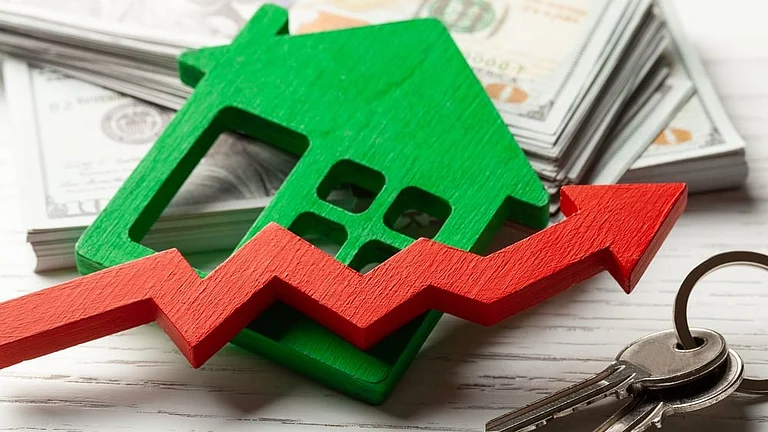Systematic Investment Plans, popularly known as SIPs, give an opportunity to millions to invest money on a regular basis and that too in a systematic manner. The biggest advantage of investing via the SIP route is, it averages the purchase price due to buying the same fund at different periods.
In this article we will focus on investing in equity mutual funds through SIPs.
There has been a sharp correction in the small cap and mid cap index for over a year now, which has left investors jittery. BSE small cap Index has fallen by almost 30% and mid cap index has fallen by 20%. Small investors are worried about deterioration of their investments made in small and mid cap mutual funds. Many investors have been investing via SIPs for past many years and are confused on how to react to such low or negative return’s in their portfolio. They are confused about whether to continue their SIPs or to stop their SIPs. Whether they should sell off their holdings at a loss or whether they should hold on for some more time. I will try answering these questions below.


The Indian equity markets, especially the small and midcap index is going through a slow down due to both internal and external factors. Internal factors like NBFC crisis, slowdown in auto sales, consumption, manufacturing and external factors like US China trade, Brexit are some of the reasons behind the slowdown.
To help you understand better, I will share an illustration of performance of some of the funds which existed during the 2008 Crisis. The 2008 market crash was one of the most difficult periods for Indian investors. The Indian markets were in a bull run until 2008 before a huge crash hit the markets. The small and midcap indices fell close to 70-80% during the 2008 crash. Long-term investors who held their nerve through the tough times of 2008-09 were able to make good returns in their mutual fund holdings.
Similarly, the Indian markets were on a bull run until end of 2017. The small and midcap indices began to fall from 2018 onwards and has been in a downward trend ever since. Though the current situation in the market is much better than what it was in 2008, but the trend seems similar for small and midcap indices. Most of the small cap and mid cap stocks have lost between 30-70%. Though the recovery phase has not yet begun but I’m hopeful of this happening soon.
For the illustration I have analysed the performances of SIPs in 5 funds which existed during the 2008 market crisis. I have considered the below points for selecting the funds for analysis.
1. I have considered small cap and mid cap funds which have been in existence for greater than 10 years. Out of those, I have excluded funds which are in the top 10 based on highest returns based on 10-year CAGR. The reason to exclude those was because I am assuming an average individual investor would not have been able to choose the best funds. Hence, I tried to pick up funds which were in the middle of the group or in the lower half of the group based on the past 10 years CAGR returns.
2. I tried to pick up funds, which were in existence for at least 3-4 years before the crisis happened (Year 2005 or older funds) .This approach was used mainly to see how the funds performed if the SIPs had started at least 3-4 years before the market crash and if the fund holder continued with the SIPs during and after the crash. For my illustration, I stopped the SIPs in the funds on May 30, 2014 mainly because there was a change in government and there was a huge upside jump in the small and mid-cap indices after that period. Since this upside was more due to optimism of government change and not due to significant rise in Corporate earnings hence, I did not want to consider those gains for my illustration.
3. The maximum period for all the funds is 10 years. In some cases, the period is slightly less than 10 years because the period from inception of fund till May 30, 2014 was less than 10 years.
4. For all investments SIP amount of Rs 1000 per month has been considered.
L&T Midcap Fund (G)
SIP Investment Returns (CAGR*): 13.48%
*Compounded Annualised Growth Rate
Investment Period Aug 09, 2004 to May 30, 2014
No of Investments 118
Total Amount Invested (Rs) 118,000.00
Total Units Purchased 4,477.96
Investment Value as on May 30, 2014 233,033.19
NAV as on May 30, 2014 58.82000
Latest NAV 128.29000 (as on Jul 17, 2019)
Reliance Growth Fund - Retail Plan (G)
SIP Investment Returns (CAGR*): 23.17%
*Compounded Annualised Growth Rate
Investment Period Jan 01, 2003 to Dec 31, 2012
No of Investments 120
Total Amount Invested (Rs) 120,000.00
Total Units Purchased 806.78
Investment Value as on Dec 31, 2012 402,177.63
NAV as on Dec 31, 2012 501.03740
Latest NAV 1105.99840 (as on Jul 17, 2019)
Kotak Small Cap Fund - Regular Plan (G)
SIP Investment Returns (CAGR*): 12.85%
*Compounded Annualised Growth Rate
Investment Period Feb 24, 2005 to May 30, 2014
No of Investments 112
Total Amount Invested (Rs) 112,000.00
Total Units Purchased 5,797.50
Investment Value as on May 30, 2014 206,483.83
NAV as on May 30, 2014 35.61700
Latest NAV 67.36300 (as on Jul 19, 2019)
Sundaram Small Cap Fund - Regular Plan (G)
SIP Investment Returns (CAGR*): 13.25%
*Compounded Annualised Growth Rate
Investment Period Feb 16, 2005 to May 30, 2014
No of Investments 112
Total Amount Invested (Rs) 112,000.00
Total Units Purchased 5,175.79
Investment Value as on May 30, 2014 210,542.94
NAV as on May 30, 2014 45.67590
Latest NAV 74.47660 (as on Jul 19, 2019)
Aditya Birla Sun Life Midcap Fund (G)
SIP Investment Returns (CAGR*): 19.46%
*Compounded Annualised Growth Rate
Investment Period Jan 01, 2003 to Dec 31, 2012
No of Investments 120
Total Amount Invested (Rs) 120,000.00
Total Units Purchased 2,894.00
Investment Value as on Dec 31, 2012 329,916.23
NAV as on Dec 31, 2012 118.94000
Latest NAV 279.01000 (as on Jul 17, 2019)
To summarise the above illustration, investors who had invested through SIPs even 4-5 years before the 2008 market crash would not have lost money if they did not stop their investments during the crisis. Those investors who would have continued with the SIP investments during the market crash would have gained by buying more units of the same fund and hence would have gained significantly through a lower average price of holdings. Long term investors were able to make an average of 13-14% CAGR returns if they held the fund for 10 years as can be seen in the above illustration.
If an investor had chosen to stop his SIP’s during the market crash, they would have lost the opportunity to lower the purchase cost and hence would have made much lesser returns even in long term.
The Current scenario in the small and midcap index is very similar though it is not as bad as it was in 2008. Mutual fund Investors who had invested in the past couple of years via the SIP route should continue investing so as to lower the average cost of holding.
Golden Rule for investors: Invest regularly and do not worry about the rise and fall in the markets. SIP route helps you average your purchase price and helps you with better returns with relatively lower risks. This rule applies for all Equity SIPs.
The author is a market expert and an equity investor

























